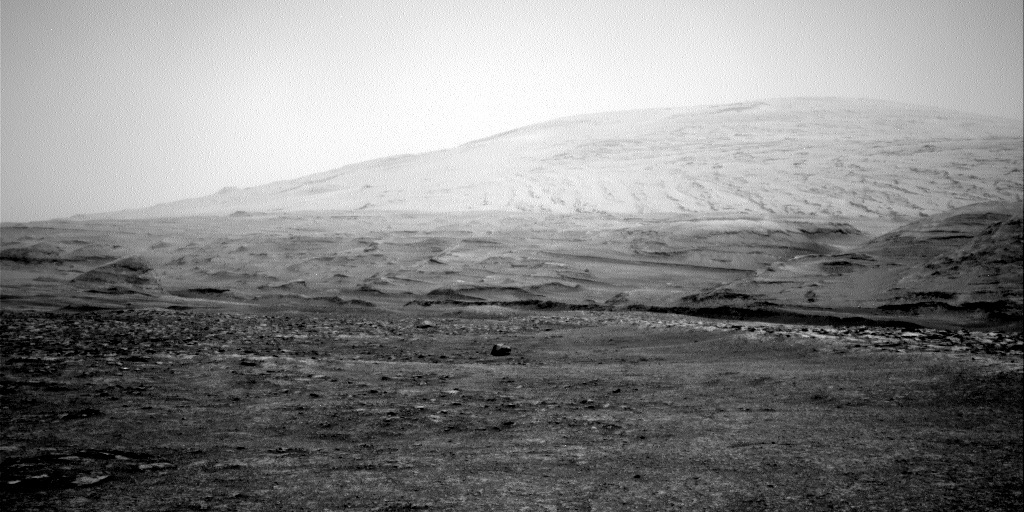2 min read

Curiosity hits the road again today, heading towards the contact with a rubbly-looking geologic unit on the way up Mount Sharp. In the middle of today’s drive, Curiosity will make a pit stop to look at a large, dark, shiny boulder called “Island Davaar” with the Mastcam filter set. The boulder, which is visible in the distance from our current position (it’s in the center of the Navcam image above), does not look like any other rocks in the surrounding landscape. Previously along Curiosity's traverse, rocks that are distinctly dark and shiny (such those written about in the blog posts from sols 1985 and 2245-46) have turned out to be iron meteorites. Today’s mid-drive imaging will help us determine whether “Island Davaar” comes from a different geologic unit in Mount Sharp, or whether it is indeed a rock from space. The boulder’s spectrum in visible and near-infrared light, as seen from Mastcam’s fourteen different filters, will have a distinct shape if it is an iron meteorite.
Before driving, Curiosity will wrap up some science observations from her current location, including APXS and MAHLI observations of the bedrock target “Achnasheen,” ChemCam LIBS observations on two other rock targets (“Rattray” and “White Coomb”), and Mastcam imaging of regions in front of the rover and out towards the horizon.
Written by Melissa Rice, Planetary Geologist at Western Washington University







